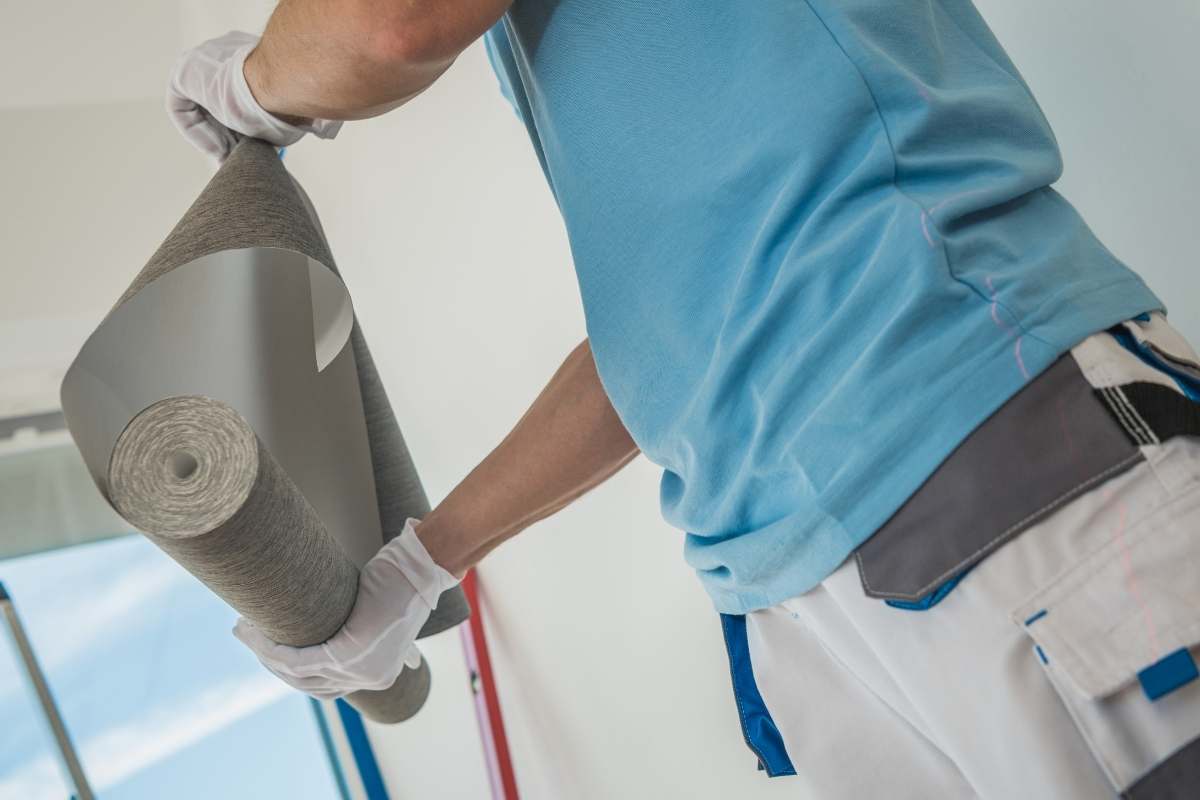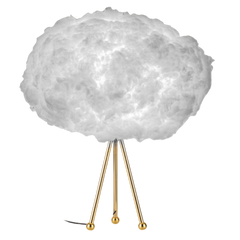Renewing the walls is a very effective option to create a different atmosphere in your home. In order to add color to your home and renew your old looking walls, you can choose to apply wallpaper as well as the whitewash option.
Wallpaper is seen as an interesting decoration element by many people, but many do not know how to make a wallpaper covering. You can continue reading our guide article for detailed information on the subject of "How to make wallpaper?"

How to Paste Wallpaper?
The general steps you need to follow for wallpaper pasting are as follows:
- Preparing the wall you will be wallpapering: Smooth out any bumps, cracks, bulges, and holes on the wall you will be wallpapering with a spatula and sandpaper. Then clean the dust and oil on the wall with a damp sponge. Make sure the wall is completely dry.
- Cutting the wallpaper: Cut the wallpaper according to the dimensions of the wall. Leave 5-10 cm of excess from the top and bottom of the wallpaper you cut according to its height. If the wallpaper has a pattern, make sure that the patterns match each other when cutting. You can use a tape measure, scissors and a utility knife when cutting the wallpaper.
- Pasting the wallpaper: You should start the wallpapering process from the middle of the wall. Cover the back of the wallpaper with adhesive using a brush and paste the wallpaper to the wall. You can cut off the excess wallpaper with a utility knife and paste the edges and corners thoroughly with a spatula, then wipe off the adhesive residue with a sponge and water. After the wallpapering process is finished, you should wait for the wallpaper to dry completely. The drying time of the wallpaper may vary depending on the type of paper, the consistency of the adhesive and the temperature of the environment. 24 hours will usually be enough for the wallpaper to dry.

Things to Do Before Wallpaper Application
There are some steps to take before applying wallpaper. These are generally as follows:
Preliminary Information:
It is necessary to make sure that there are no holes or cracks on the surface where the wallpaper will be applied. It is also important that the renovation work on the walls and ceiling of the space where the wallpaper will be applied is completed. It is necessary to make sure that the internal parts of the electrical outlets in the space are installed. It is recommended that the skirting boards are placed after the wallpaper application.
Preliminary:
The lot numbers of the rolls to be applied must be the same and undamaged. The top layer can be paper, nonwoven (fiber), vinyl, textile (fabric). When cutting the roll to the lengths you specify, you must be sure which side is the top in the cut pieces.
Then you need to remove the old wallpaper on the surface. There should be no moisture on the wall at this stage. In addition, the surface of the wall should be sanded to clean the dirt and make the surface smooth.
Preparing Wallpaper Rolls:
First, only 1 roll is opened from its original packaging and the product is checked. The roll label must be kept. You need to measure the wall height, considering the possible unevenness of the ceiling. For ease of application, you need to cut the first length from your roll so that it is approximately 10 cm more than your wall height.
Before cutting the second size paper, adjust the patterns side by side by paying attention to the harmony of the patterns with the first size paper and cut by leaving a 10 cm excess. The aim here is to pay attention to the pattern repeat value on the roll label. You can cut the following sizes with the same method. It is also extremely important to start the wallpaper application from the lighted wall surface.
Preparation of Adhesive:
You need to prepare the wallpaper adhesive according to the instructions on the box. You should be careful not to mix the adhesive in a bucket and make sure that it is not too watery or too thick.
Calculating How Much Wallpaper to Use:
To calculate how much wallpaper to use, you should measure the wall height and the perimeter of the walls to be covered. In order to find out how many meters of wall a roll will cover, you need to know the measurements clearly. You can calculate by taking the width of the wallpaper roll as 50 cm (0.50 meters); length as 10 meters and the average wall height as 200 cm.
1. To find out how many lengths can be obtained from 1 roll:
Roll length / wall length = 10 meters / 2 meters = 5 LENGTHS
Considering the pattern repeat, we can get a maximum of 4.5 LENGTHS from 1 roll.
2. To find out how many sizes you will use to cover your entire wall:
Let's assume your wall length is 5 meters.
Wall length / roll width = 5 / 0.50 = 10 LENGTH
3. To find the total number of rolls required:
Total number of rolls required = total number of LENGTHS required / number of LENGTHS taken from one roll = 10 / 3 = 3.33 ROLLS Round this value to a whole number. As a result, 4 ROLLS are required. You can cover the windows and the top of the doors with the remaining pieces of wallpaper from cutting the rolls.

Things to Do During Wallpaper Application
The topic of “How to paste wallpaper at home?” is extremely important in this process. What needs to be done during the application is generally as follows:
Pasting the Wallpaper:
If the bottom surface of the wallpaper is paper, glue must be applied to the paper base of the roll. If the bottom surface of the wallpaper is nonwoven (fiber), glue must be applied to the wall.
Removing Bubbles:
When sticking the wallpaper, you should use a spirit level to make sure that the wallpaper is even. You can smooth out air bubbles and wrinkles on the wallpaper with a spatula and joints with a joint roller.
Editing Joints:
Ovalite substance should be used for wallpaper joints. The most important criterion to be considered when using this substance is to apply it with a thin brush. It is necessary to make short touches to the corners with thin student brushes to ensure adhesion. When the wallpaper is adhered, you should wait for it to dry.

What to Do After Wallpaper Application
What needs to be done after wallpaper application is generally as follows:
Cutting off the excess:
You need to be careful to stick the wallpaper so that the edges do not overlap and do not leave any gaps. You can edit the excess at the top and bottom by cutting it with a utility knife.
Final Checks:
After the wallpaper is stuck and the final arrangements are completed, the most important step is the final check. Also, the windows of our room should be closed during the application and drying period. Our wallpaper should dry at normal room temperature. After the drying process, you should definitely check if there is any lifting or bubbles in the cut areas.
What is Wallpaper Pasted With?
Powdered glue is usually used when pasting wallpaper.
How to Prepare Wallpaper Paste?
To prepare wallpaper, you must first decide how many grams you will prepare. The water ratio of the wallpaper adhesive plays a big role in the process of preparing the adhesive. To prepare 250 grams of adhesive, you need to use 6 liters of water.
To prepare 500 grams of adhesive, 12 liters must be used. Powder adhesive is slowly added to the water. This mixture is constantly stirred. After mixing for 10 minutes, you should wait for 10 minutes. After mixing for 1 minute, your adhesive will be ready.

Is Wallpaper Adhesive Applied to the Wall or the Paper?
If the bottom surface of the wallpaper is paper, then glue should be applied to the paper base of the roll. However, if the bottom surface of the wallpaper is nonwoven (fiber), then the glue should definitely be applied to the wall.
What to Put Under Wallpaper?
Only adhesive is applied under the wallpaper.
How to Make Wallpaper Joints?
When adding the second piece of wallpaper, you should carefully align the joint with the first piece, and if the wallpaper is patterned, you should ensure that the pattern continues. There should usually be some space between the joints of the two pieces.
For this reason, it is possible to cut the paper a little too much. In order for the paper to stick to the joints properly, you can press the edges well using a seam roller. This will prevent the joints from being sharply visible.
Lil'Gaea offers innovative and environmentally friendly options in decoration with its sustainable and nature-protecting approach. Lil'Gaea's wallpaper models are made of natural materials. Wallpaper models produced from materials obtained from renewable resources that do not harm the health of both children and adults offer simplicity and elegance together with their designs that fit into every home. Lil'Gaea is the best option to add an aesthetic and tidy look to your child's room!


